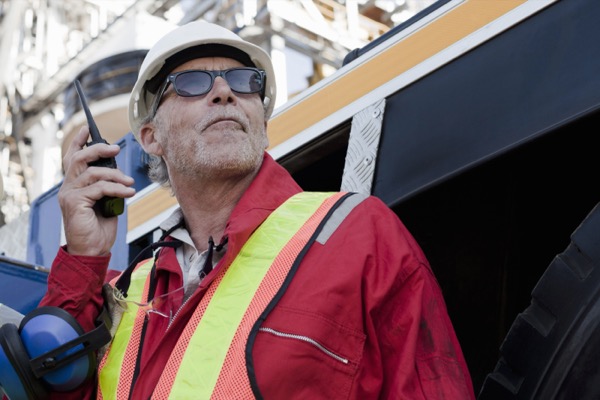Provided by: Three Sixty Safety
Chocking and Blocking
When loading or unloading trucks and trailers, an essential part of a safe working environment is the proper use of chocks and blocks. Every year, workers are severely or fatally injured because the wheels of a truck or trailer were not chocked. Vehicle drivers are also injured when trailers overturn because an unblocked freight shifted during travel.
Wheels Aren’t Always Meant to Roll
Accidents are caused each year when a truck or trailer rolls away from the dock because no one took time to chock the wheels. In some cases, drivers who got out of the cab were crushed by their own rig. In other cases, lift truck drivers were injured when their forklift fell between the dock edge and a trailer that rolled away.
To prevent this from happening, the wheels of trucks or trailers at a dock should always be chocked prior to the start of any operation. Lift truck drivers should never enter a trailer without first verifying that the wheels have been chocked, that the floor of the trailer is in good condition and that it is capable of supporting the weight of the forklift and its load. In most states, the Occupational Safety and Health Administration (OSHA) requires that vehicle wheels be chocked prior to permitting forklifts to enter trailers.
Positioning of Chocks
The purpose of the chock is to pin the wheels and hold them stationary so that the tractor or trailer cannot move. However, if chocks are not placed in the right location, they may not prevent the movement of the wheels.
The safest procedure is to always chock the wheels closest to the dock, especially on a tandem-axle trailer. This is important because the lift truck entering the trailer can exert a downward force, which helps pin the wheels more effectively against the chock. Otherwise, if the front axle is chocked, the forward motion of a forklift entering the trailer may loosen the chock, allowing the trailer to move forward, or even jump the chock.
The Hazards of Shifting Loads
Freight inside the trailer must also be blocked or secured to keep the load from shifting. Equipment such as load bars, vertical supports and load straps should be used. If left unsecured, cargo can be damaged or cause a trailer to overturn in transit. Proper safety procedures should be observed any time a load is raised and transferred.
Have Proper Equipment at Hand
Be sure the correct equipment is always available. Every loading dock should be equipped with chocks, which, if properly used, will keep vehicles from moving while being loaded or unloaded, especially when forklift trucks are used. Chocks will more likely be available at all times if they are fastened to the dock with a chain or rope to prevent their “disappearance,” and stored out of high-traffic areas when not in use.
Chocks and blocks help avoid accidents. Use them, and require others to do the same!
This Safety Matters flyer is for general informational purposes only, and is not intended as medical or legal advice.







